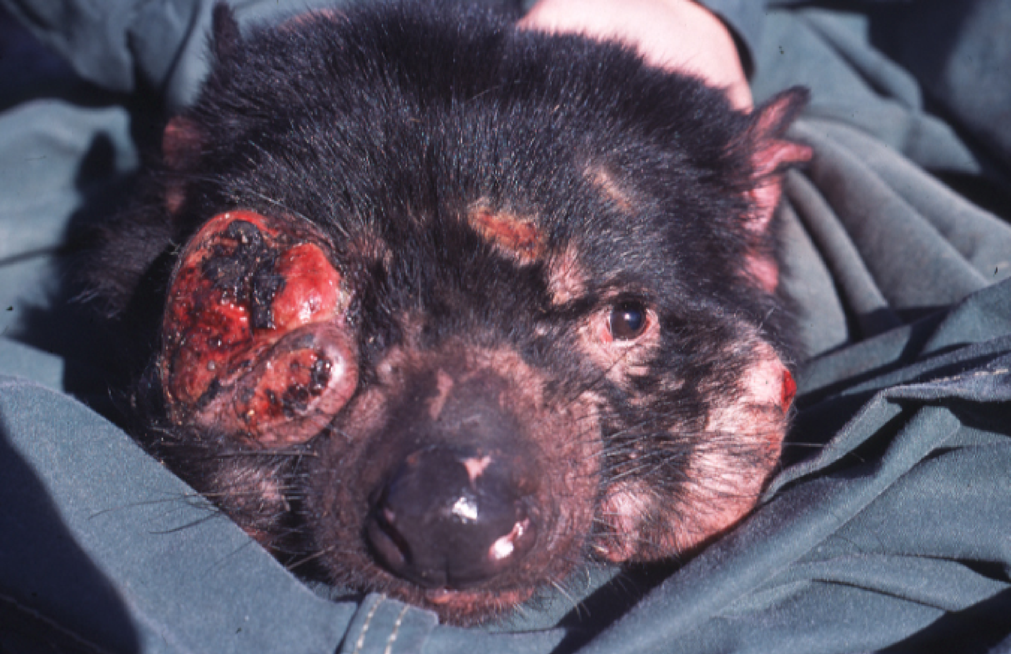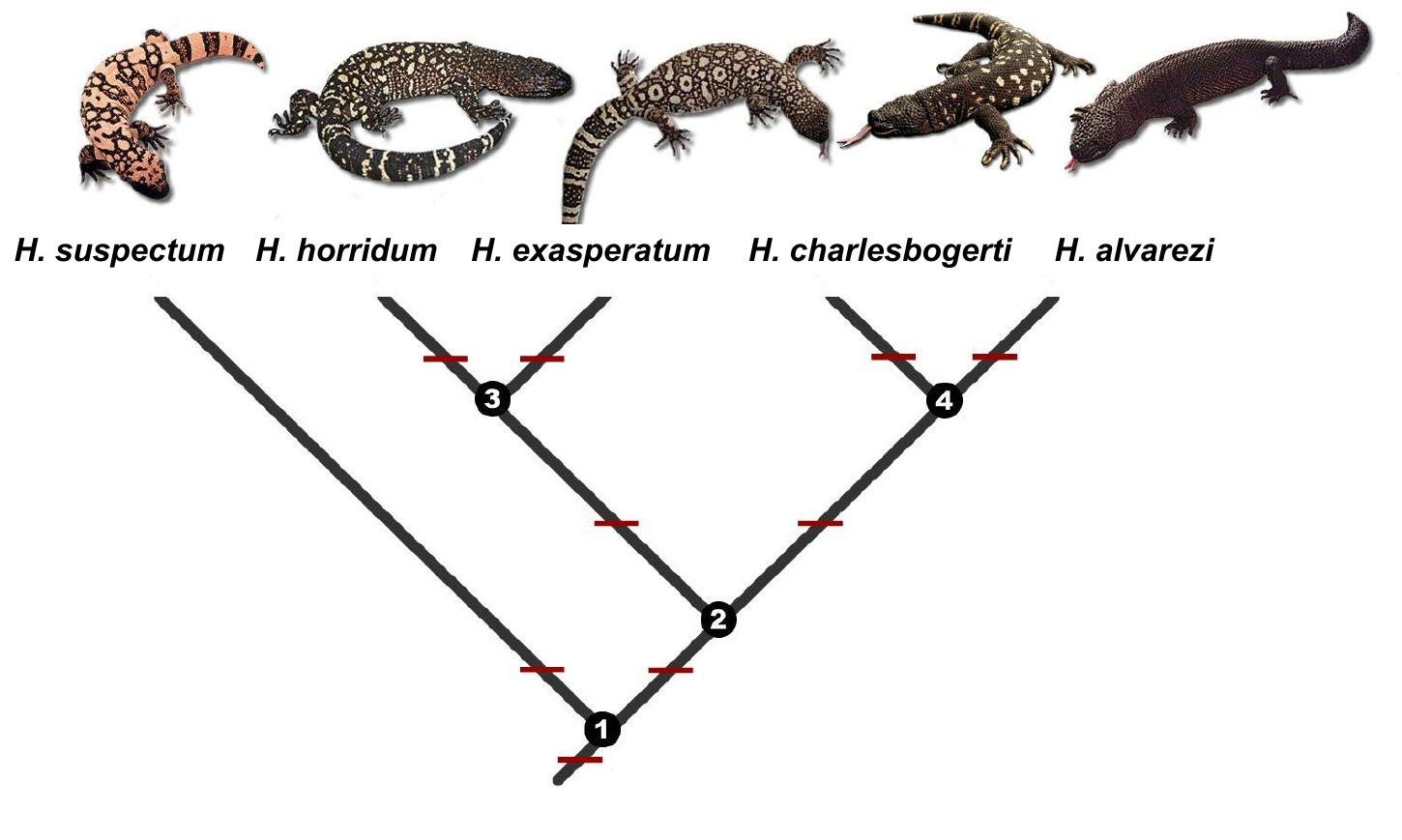|
Katherine Belov
Katherine Belov (born 1973) is an Australian geneticist, professor of comparative genomics in the School of Life and Environmental Sciences and Pro Vice Chancellor of Global Engagement at the University of Sydney. She is head of the Australasian Wildlife Genomics Group and research expert in the area of comparative genomics and immunogenetics, including Tasmanian devils and koalas, two iconic Australian species that are threatened by disease processes. Throughout her career, she has disproved the idea that marsupial immune system is primitive, characterized the South American gray short-tailed opossum's immune genes, participated in the Platypus Genome Project, led research identifying the properties of platypus venom, and identified the cause of the spread of the Tasmanian devil's contagious cancer. Belov is an advocate for Women in STEM and leads a research team of largely female students and post-doctoral students. Biography Katherine Belov was born in Sydney, Australia in 1 ... [...More Info...] [...Related Items...] OR: [Wikipedia] [Google] [Baidu] |
:Template:Infobox Writer/doc
Infobox writer may be used to summarize information about a person who is a writer/author (includes screenwriters). If the writer-specific fields here are not needed, consider using the more general ; other infoboxes there can be found in :People and person infobox templates. This template may also be used as a module (or sub-template) of ; see WikiProject Infoboxes/embed for guidance on such usage. Syntax The infobox may be added by pasting the template as shown below into an article. All fields are optional. Any unused parameter names can be left blank or omitted. Parameters Please remove any parameters from an article's infobox that are unlikely to be used. All parameters are optional. Unless otherwise specified, if a parameter has multiple values, they should be comma-separated using the template: : which produces: : , language= If any of the individual values contain commas already, add to use semi-colons as separators: : which produces: : , ps ... [...More Info...] [...Related Items...] OR: [Wikipedia] [Google] [Baidu] |
Platypus
The platypus (''Ornithorhynchus anatinus''), sometimes referred to as the duck-billed platypus, is a semiaquatic, egg-laying mammal Endemic (ecology), endemic to Eastern states of Australia, eastern Australia, including Tasmania. The platypus is the sole living representative or monotypic taxon of its Family (biology), family (Ornithorhynchidae) and genus (''Ornithorhynchus''), though a number of Fossil Monotremes, related species appear in the fossil record. Together with the four species of echidna, it is one of the five wikt:extant, extant species of monotremes, mammals that lay Egg (biology), eggs instead of giving birth to live young. Like other monotremes, it senses prey through electroreception, electrolocation. It is one of the few species of venomous mammals, as the male platypus has a spur (zoology), spur on the hind foot that delivers a Platypus venom, venom, capable of causing severe pain to humans. The unusual appearance of this egg-laying, duck-billed, beaver-t ... [...More Info...] [...Related Items...] OR: [Wikipedia] [Google] [Baidu] |
Major Histocompatibility Complex
The major histocompatibility complex (MHC) is a large locus on vertebrate DNA containing a set of closely linked polymorphic genes that code for cell surface proteins essential for the adaptive immune system. These cell surface proteins are called MHC molecules. This locus got its name because it was discovered via the study of transplanted tissue compatibility. Later studies revealed that tissue rejection due to incompatibility is only a facet of the full function of MHC molecules: binding an antigen derived from self-proteins, or from pathogens, and bringing the antigen presentation to the cell surface for recognition by the appropriate T-cells. MHC molecules mediate the interactions of leukocytes, also called white blood cells (WBCs), with other leukocytes or with body cells. The MHC determines donor compatibility for organ transplant, as well as one's susceptibility to autoimmune diseases. In a cell, protein molecules of the host's own phenotype or of other biologic entities ... [...More Info...] [...Related Items...] OR: [Wikipedia] [Google] [Baidu] |
Devil Facial Tumour Disease
Devil facial tumour disease (DFTD) is an aggressive non-viral clonally transmissible cancer which affects Tasmanian devils, a marsupial native to Australia. DFTD was first described in 1996. In the subsequent decade the disease ravaged Tasmania's wild devils. Affected high-density populations had up to 100% mortality in 12–18 months. Between 1996 and 2015, DFTD wiped out 95% of affected populations. Clinical signs There is often more than one primary tumour. Visible signs of DFTD begin with lumps of soft tissue around the mouth, which ulcerate. Tumours are locally aggressive, destroying the underlying bone of the jaw which interferes with feeding. Tumours may also cover the eyes. Devils usually die within six months from organ failure, secondary infection, or metabolic starvation. DFTD is rare in juveniles. It affects males and females equally. Transmission The most plausible route of transmission is through biting, particularly when canine teeth come into direct contact with ... [...More Info...] [...Related Items...] OR: [Wikipedia] [Google] [Baidu] |
Clonally Transmissible Cancer
A transmissible cancer is a cancer cell or cluster of cancer cells that can be transferred between individuals without the involvement of an infectious agent, such as an oncovirus. Transmission of cancer between humans is rare. The evolution of transmissible cancer has occurred naturally in other animal species, but human cancer transmission is rare. Humans In humans, a significant fraction of Kaposi's sarcoma occurring after transplantation may be due to tumorous outgrowth of donor cells. Although Kaposi's sarcoma is caused by a virus (Kaposi's sarcoma-associated herpesvirus), in these cases, it appears likely that transmission of virus-infected tumor cells—rather than the free virus—caused tumors in the transplant recipients. In 2007, four people (3 women & 1 man) received different organ transplants (liver, both lungs and kidneys) from a 53-year-old woman who had recently died from intracranial bleeding. Before transplantation, the organ donor was deemed to have no signs of ... [...More Info...] [...Related Items...] OR: [Wikipedia] [Google] [Baidu] |
Sea Anemone
Sea anemones are a group of predation, predatory marine invertebrates of the order (biology), order Actiniaria. Because of their colourful appearance, they are named after the ''Anemone'', a terrestrial flowering plant. Sea anemones are classified in the phylum Cnidaria, class Anthozoa, subclass Hexacorallia. As cnidarians, sea anemones are related to corals, jellyfish, tube-dwelling anemones, and ''hydra (genus), Hydra''. Unlike jellyfish, sea anemones do not have a Jellyfish#Life history and behavior, medusa stage in their life cycle. A typical sea anemone is a single polyp (zoology), polyp attached to a hard surface by its base, but some species live in soft sediment, and a few float near the surface of the water. The polyp has a columnar trunk topped by an oral disc with a ring of tentacles and a central mouth. The tentacles can be retracted inside the body cavity or expanded to catch passing prey. They are armed with cnidocytes (stinging cells). In many species, additional n ... [...More Info...] [...Related Items...] OR: [Wikipedia] [Google] [Baidu] |
Gila Monster
The Gila monster (''Heloderma suspectum'', ) is a species of venomous lizard native to the Southwestern United States and the northwestern Mexican state of Sonora. It is a heavy, typically slow-moving reptile, up to long, and it is the only venomous lizard native to the United States. Its venomous close relatives, the four beaded lizards (all former subspecies of ''Heloderma horridum'') inhabit Mexico and Guatemala. The Gila monster is sluggish in nature, so it is not generally dangerous and very rarely poses a real threat to humans. However, it has a fearsome reputation and is sometimes killed in spite of the species being protected by state law in Arizona. History The name "Gila" refers to the Gila River Basin in the U.S. states of Arizona and New Mexico, where the Gila monster was once plentiful. ''Heloderma'' means "studded skin", from the Ancient Greek words (), "the head of a nail or stud", and (), "skin". ''Suspectum'' comes from the describer, paleontologist Edwa ... [...More Info...] [...Related Items...] OR: [Wikipedia] [Google] [Baidu] |
Cysteine-rich Secretory Proteins
Cysteine-rich secretory proteins, often abbreviated as CRISPs, are a group of glycoproteins. They are a subgroup of the CRISP, antigen 5 and Pr-1 (CAP protein family, CAP) protein superfamily and also contain a domain related to the Stichodactyla toxin, ShK toxins. They are substantially implicated in the functioning of the mammalian reproductive system. CRISPs are also found in a variety of snake venoms where they inhibit both Muscle contraction#Smooth muscle contraction, smooth muscle contraction and cyclic nucleotide-gated ion channels. Structure CRISPs contain two Protein domain, domains joined by a hinge region. The larger domain is a CAP protein family, CAP-like 'Pathogenesis-related 1' domain (PR-1), followed by the smaller Stichodactyla toxin, ShK-like 'Cysteine-Rich Domain' (CRD). CRISPs are glycoproteins, with a number of carbohydrate glycans covalent bond, covalently attached to amino acid side-chains on their surface via glycosylation. The protein primary structure, p ... [...More Info...] [...Related Items...] OR: [Wikipedia] [Google] [Baidu] |
Latrodectus
''Latrodectus'' is a broadly distributed genus of spiders with several species that are commonly known as the true widows. This group is composed of those often loosely called black widow spiders, brown widow spiders, and similar spiders. However, the diversity of species is much greater. A member of the family Theridiidae, this genus contains 34 species, which include several North American "black widows" (southern black widow ''Latrodectus mactans'', western black widow ''Latrodectus hesperus'', and northern black widow ''Latrodectus variolus''). Besides these, North America also has the red widow ''Latrodectus bishopi'' and the brown widow ''Latrodectus geometricus'', which, in addition to North America, has a much wider geographic distribution. Elsewhere, others include the European black widow (''Latrodectus tredecimguttatus''), the Australian redback black widow (''Latrodectus hasseltii'') and the closely related New Zealand katipō (''Latrodectus katipo''), several differ ... [...More Info...] [...Related Items...] OR: [Wikipedia] [Google] [Baidu] |
Metalloproteinases
A metalloproteinase, or metalloprotease, is any protease enzyme whose catalytic mechanism involves a metal. An example is ADAM12 which plays a significant role in the fusion of muscle cells during embryo development, in a process known as myogenesis. Most metalloproteases require zinc, but some use cobalt. The metal ion is coordinated to the protein via three ligands. The ligands coordinating the metal ion can vary with histidine, glutamate, aspartate, lysine, and arginine. The fourth coordination position is taken up by a labile water molecule. Treatment with chelating agents such as EDTA leads to complete inactivation. EDTA is a metal chelator that removes zinc, which is essential for activity. They are also inhibited by the chelator orthophenanthroline. Classification There are two subgroups of metalloproteinases: * Exopeptidases, metalloexopeptidases ( EC number: 3.4.17). * Endopeptidases, metalloendopeptidases (3.4.24). Well known metalloendopeptidases include ADAM prot ... [...More Info...] [...Related Items...] OR: [Wikipedia] [Google] [Baidu] |
Venom
Venom or zootoxin is a type of toxin produced by an animal that is actively delivered through a wound by means of a bite, sting, or similar action. The toxin is delivered through a specially evolved ''venom apparatus'', such as fangs or a stinger, in a process called envenomation. Venom is often distinguished from poison, which is a toxin that is passively delivered by being ingested, inhaled, or absorbed through the skin, and toxungen, which is actively transferred to the external surface of another animal via a physical delivery mechanism. Venom has evolved in terrestrial and marine environments and in a wide variety of animals: both predators and prey, and both vertebrates and invertebrates. Venoms kill through the action of at least four major classes of toxin, namely necrotoxins and cytotoxins, which kill cells; neurotoxins, which affect nervous systems; myotoxins, which damage muscles; and haemotoxins, which disrupt blood clotting. Venomous animals cause tens of thousa ... [...More Info...] [...Related Items...] OR: [Wikipedia] [Google] [Baidu] |
._First_Description_1799.jpg)




.jpg)
